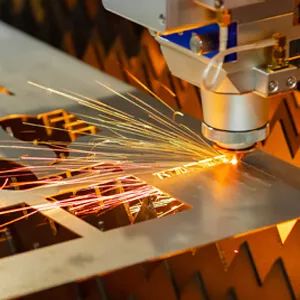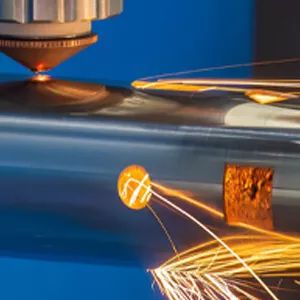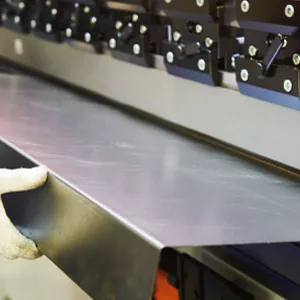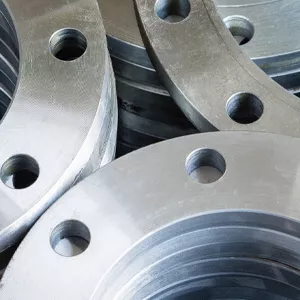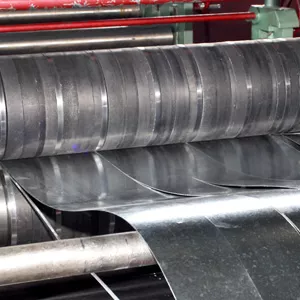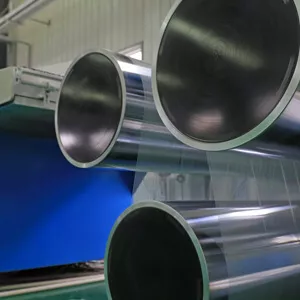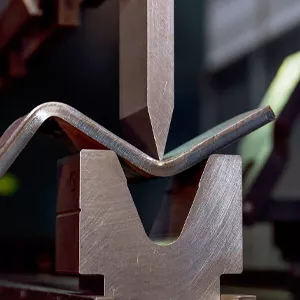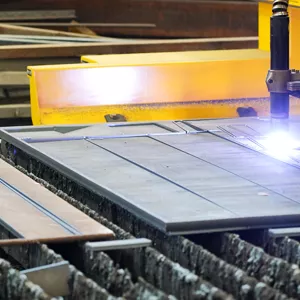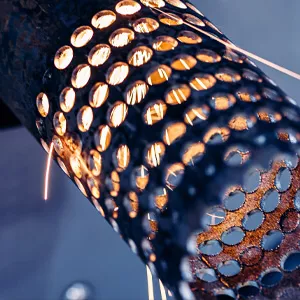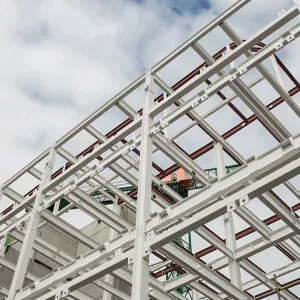
Welded manufacturing is one of the cornerstones of modern industry and construction sectors. This production method, used in many different fields today, is preferred for creating products that are both durable and aesthetically successful. So, what is welded manufacturing and how is it done? In which sectors is it used, and which methods are most preferred? Here's what you need to know about welded manufacturing.
What is Welded Manufacturing?
Welded manufacturing is a production method used for joining metals and other materials. This method generally involves joining two or more materials with the aid of heat and/or pressure. The filler materials used during the welding process enhance the durability of the welded structure. This method is preferred in a wide range of applications, from large-scale projects to work requiring precise engineering.
One of the most significant advantages of welded manufacturing is that it creates strong and durable connections. Additionally, its ability to join different materials provides design flexibility. These features enable companies engaged in welded manufacturing to increase their product variety and better respond to customer demands.
How is Welded Manufacturing Done?
The welded manufacturing process usually involves the following fundamental steps:
1-Preparation Stage:
- The materials to be joined are prepared, and their surfaces are cleaned.
- The areas to be welded are marked, and necessary measurements are made.
2-Selection of Welding Method:
- A welding method suitable for the project requirements is determined.
- Choices include methods like MIG, TIG, and submerged arc welding.
3-Welding Process:
- Materials are joined using heat or pressure.
- Filler materials and welding equipment are used to enhance the quality of the process.
4-Inspection and Testing:
- The connections are tested according to welded manufacturing standards.
- Checks for cracks, deformation, or other defects are performed.
5-Final Processes:
- Welded surfaces are cleaned, and in necessary cases, polishing or painting processes are applied.
- The product goes through quality control tests before being delivered to the end-user.
In Which Sectors is Welded Manufacturing Used?
Welded manufacturing is used in a wide array of industries. Here are some significant sectors:
1-Automotive Industry:
- Welded manufacturing is indispensable in the production of vehicle bodies, chassis, and other metal parts.
2-Construction and Building Sector:
- Structures like bridges, buildings, and steel constructions are made durable and long-lasting through welded manufacturing.
3-Energy and Petrochemical:
- Pipelines, storage tanks, and other critical equipment are produced using welding processes.
4-Aerospace:
- Welding methods are preferred in the manufacturing of aircraft and spacecraft, which require high precision.
5-Maritime:
- Welded manufacturing used in shipbuilding provides durable and waterproof connections.
Companies engaged in welded manufacturing contribute value in different areas by providing solutions suitable for sectoral requirements.
Which Methods are Most Preferred in Welded Manufacturing?
The methods used in the welded manufacturing process vary according to the type and requirements of the project. The most preferred methods are:
1-MIG (Metal Inert Gas) Welding:
- It is widely used due to its ease of application and quick results.
- It is especially preferred in the automotive sector.
2-TIG (Tungsten Inert Gas) Welding:
- Used in projects requiring high precision.
- Effective in joining materials like stainless steel and aluminum.
3-Submerged Arc Welding:
- Provides durable joining in materials like steel and iron.
- Frequently preferred in industrial applications.
4-Arc Welding:
- An economical and durable method.
- Used in the construction sector and large-scale projects.
5-Laser Welding:
- Used in jobs requiring high technology.
- Suitable for thin materials and precise workmanship.
Welded manufacturing standards ensure these methods are applied correctly and safely, guaranteeing product quality.
What Materials are Used in Welded Manufacturing?
The materials used in the welded manufacturing process can vary according to project requirements. However, the following materials are generally preferred:
1-Steel:
- One of the most used materials due to its durability and workability.
2-Aluminum:
- Stands out for being lightweight and corrosion-resistant.
3-Stainless Steel:
- Preferred in projects requiring aesthetics and durability.
4-Copper and Alloys:
- Used in special applications due to its electrical and thermal conductivity.
5-Titanium:
- A lightweight and durable material preferred in the aerospace and medical sectors.
Companies engaged in welded manufacturing increase quality and durability by making correct material selections in their projects. Additionally, compliance with welded manufacturing standards during material selection is of great importance.
Welded Manufacturing: Advantages, Disadvantages, and More
Welded manufacturing has become an essential part of modern industrial production processes. This method is preferred to achieve the permanent combination of metals and similar materials. However, like every method, welded manufacturing has its advantages and disadvantages. Furthermore, understanding the differences from other manufacturing techniques, environmental impacts, and the standards that need to be applied is critically important for companies engaged in welded manufacturing.
Advantages of Welded Manufacturing
1-Strong and Permanent Connections: Welded manufacturing creates very strong and durable connections in the joining of metals. This stands out in the production of structurally important parts.
2-Flexibility: It is a versatile technique since it enables the joining of different materials. It allows for various applications, especially in the industrial and construction sectors.
3-Cost Effectiveness: When used in mass production, the cost of welded manufacturing can be lower compared to other techniques. Material savings and quick processing time increase this cost-effectiveness.
4-Fast Application: Welded manufacturing can be applied more quickly compared to other joining techniques. This saves time.
Disadvantages of Welded Manufacturing
1-Thermal Stresses and Distortions: The high temperatures applied during the process can lead to stresses and deformations in metals.
2-Risk of Errors: Welded manufacturing is sensitive to errors made during the process. Poor quality welding can result in weak connections.
3-Equipment and Operator Competence: Effective application of this method requires high-quality equipment and experienced operators. This can create additional costs.
4-Environmental Impacts: Gases and other harmful substances generated during the welding process can have negative effects on the environment.
Differences Between Welded Manufacturing and Other Manufacturing Techniques
1-Type of Connection: Welded manufacturing permanently joins materials, whereas mechanical methods like bolts and rivets offer removable connections.
2-Material Saving: Welded manufacturing generally uses less material because it does not require additional parts. This situation provides savings in both cost and resources.
3-Areas of Application: While welding is especially preferred in joining metal structures, other techniques are more common with materials such as wood and plastic.
4-Mechanical Strength: Welded manufacturing generally shows superior performance in terms of mechanical strength.
How Can Environmental Impacts in Welded Manufacturing Be Minimized?
Companies engaged in welded manufacturing should implement certain strategies to minimize environmental impacts:
- Use Recycled Materials: Preferring materials that support recycling in manufacturing reduces raw material consumption.
- Emissions Control Systems: Modern systems can be used to filter harmful gases generated during welding.
- Energy Efficiency: By choosing energy-saving equipment, the carbon footprint can be reduced.
- Proper Waste Management: Recycling the metal waste generated during welding is an effective way to protect the environment.
What Standards Are Applied in Welded Manufacturing Processes?
To ensure the quality and reliability of welded manufacturing, certain standards must be applied. These standards also enable companies engaged in welded manufacturing to compete nationally and internationally:
1-ISO 3834: This standard, which addresses quality management in welding processes, specifies conditions before and after processing.
2-EN 1090: Necessary for steel and aluminum structures, this standard covers welded manufacturing in structural steelworks.
3-ASME Section IX: Regulates standards for welding processes in pressure vessels and pipelines.
4-AWS D1.1: Developed by the American Welding Society, this standard is one of the primary guides in welded structures.
What Should Companies Engaged in Welded Manufacturing Pay Attention To?
Companies engaged in welded manufacturing need to pay attention to the following subjects to provide a successful and sustainable production process:
1-Trained Personnel: Welded manufacturing should be carried out by experienced and certified operators. This increases production quality and reduces error rates.
2-Correct Equipment Selection: The technology of the equipment used affects process efficiency. Working with modern machinery saves time and energy.
3-Quality Control: Welding processes should be monitored with regular quality controls. Methods like ultrasonic testing and X-ray inspections guarantee the durability of connections.
4-Sensitivity to Environmental Issues: Sensitivity in waste recycling and energy-saving issues allows the company to gain an environmentally friendly image.
5-Compliance with Standards: Working in accordance with welded manufacturing standards not only meets legal requirements but also increases customer satisfaction.
Welded manufacturing is a broad production method with its advantages, disadvantages, and environmental impacts. When companies engaged in welded manufacturing fulfill the responsibilities brought by this method, they can stand out in the sector and demonstrate an environmentally friendly approach.

 TR
TR

